1720 c Wolf’s Bane, Nicholas Robert (1610-1684); 54cm, huge folio engraving
1720 c Wolf’s Bane, Nicholas Robert (1610-1684); 54cm, huge folio engraving
Couldn't load pickup availability
Aconitum lycoctonum
Aconitum lycoctonum (wolf's-bane or northern wolf's-bane) is a species of flowering plant in the genus Aconitum, of the family Ranunculaceae, native to much of Europe and northern Asia. It is found in lowlands to the subalpine zone, mainly in forests and shaded habitats. Along with A. napellus, A. lycoctonum is of the most common European species of the Aconitum genus. They are also grown ornamentally in gardens, thriving well in ordinary garden soil. As such, A. lycoctonum can be found in North America, especially in eastern Canada, often in old gardens or as garden escapees.
Engraved and drawn by Nicholas Robert (1610-84. On fine watermarked, laid paper.
Imperial folio. Platemarks each approx. 450 x 300 mm. (15 3/4 x 11 3/4 in), sheets approx. 540 x 38 mm..
On beautiful 18th Century laid paper with the watermark sadly indecipherable..
Issued in the exceptionally rare series: Estampes pour servir l’Histoire des Plantes by Nicholas Robert, Paris 1719-1786?
The plates are 17th Century and issued at some time up to 1786.
Plates by or after Nicolas Robert represent work by the greatest botanical artist of the seventeenth century. The work was never published or offered for public sale, and the present plate was probably given as a Royal gift some time between 1719 and about 1786.
"The original idea for this encyclopaedic undertaking was conceived by Perrault and the proposal was enthusiastically received by Colbert, minister to Louis XIV, although it appears to have actually begun to take shape only when the botanist Denis Dodart (1634-1707) joined the Academie in 1673. His work, Memoires pour servir a l'Histore des Plantes, which was intended to form the introductory volume to this series, appeared in 1675 and contained thirty-nine plates by Robert. In it Dodart lamented the fact that none of the engravings could be in colour, but at least, he assured the reader, all the illustrations in the new series would be drawn directly from life, the artist making every effort to present the plants in their actual dimensions" (Lucia Tongiorgi Tomasi An Oak Spring Flora p 168).
References: BM (NH) IV, p 1515; Brunet IV.1325; Bultingaire Les Velins du Museum d'Histore Naturelle de Paris [n.d.]; Great Flower Books (1990) p 91; Hunt, "Flora Portrayed" (1985) p 21; Hunt, "Printmaking in the Service of Botany" (1986) 16; Laissus & Monseigny, "Les Plantes du Roi" in Revue d'histore des sciences, XXII, fasc. 3, pp 193-236; Nissen BBI 533 & 504; Rix The Art of the Plant World p 61.
The last significant collection of plates (uncoloured) to have ever come up for sale was in 2012 when Sotheby's offered a set of 319 such plates estimated at UK£ 120,000 - 160,000.
"THE FINEST COLLECTION OF FLOWER ENGRAVINGS DURING THE SEVENTEENTH CENTURY" (Blunt)
Two marginal age spots.
Share
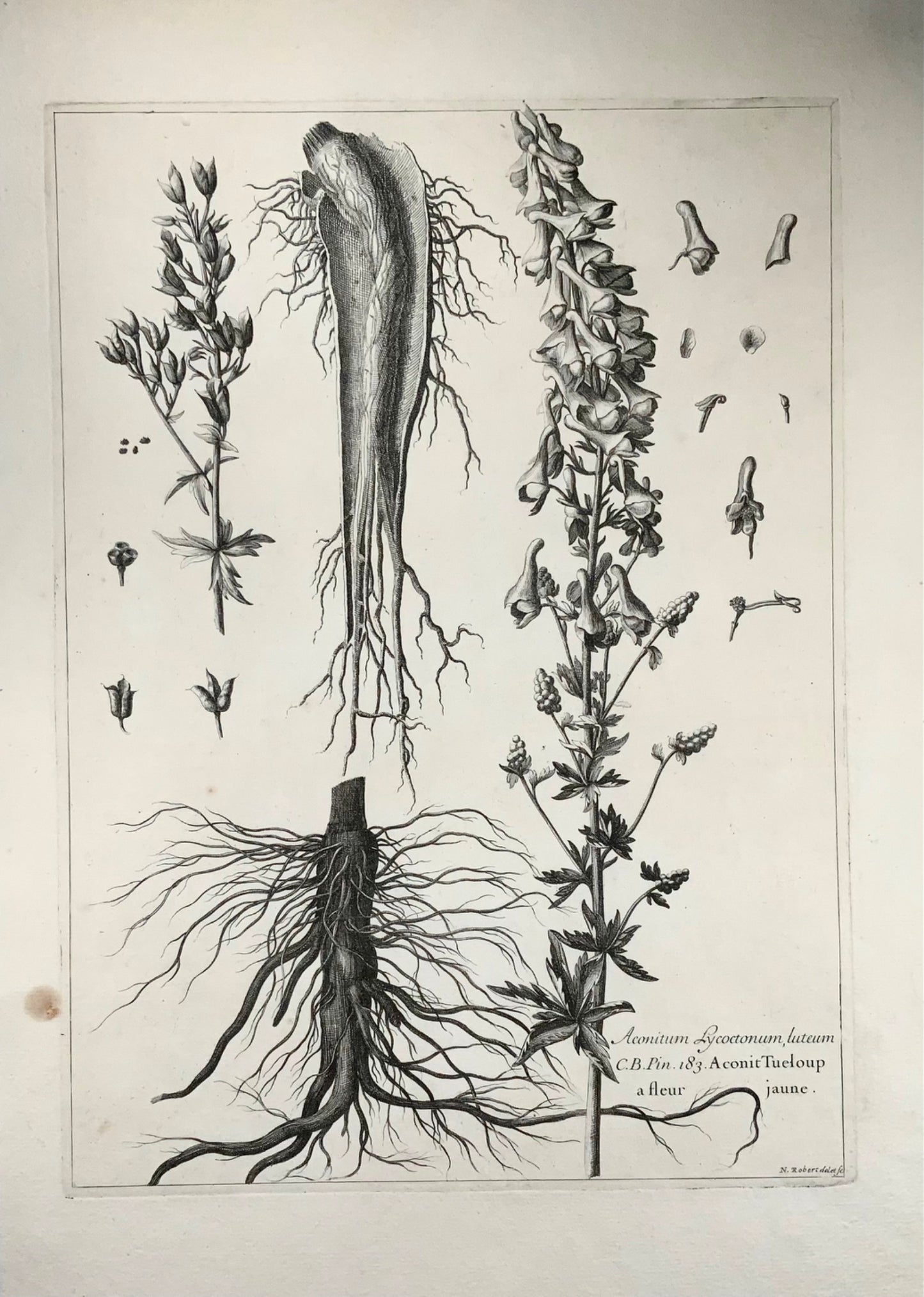
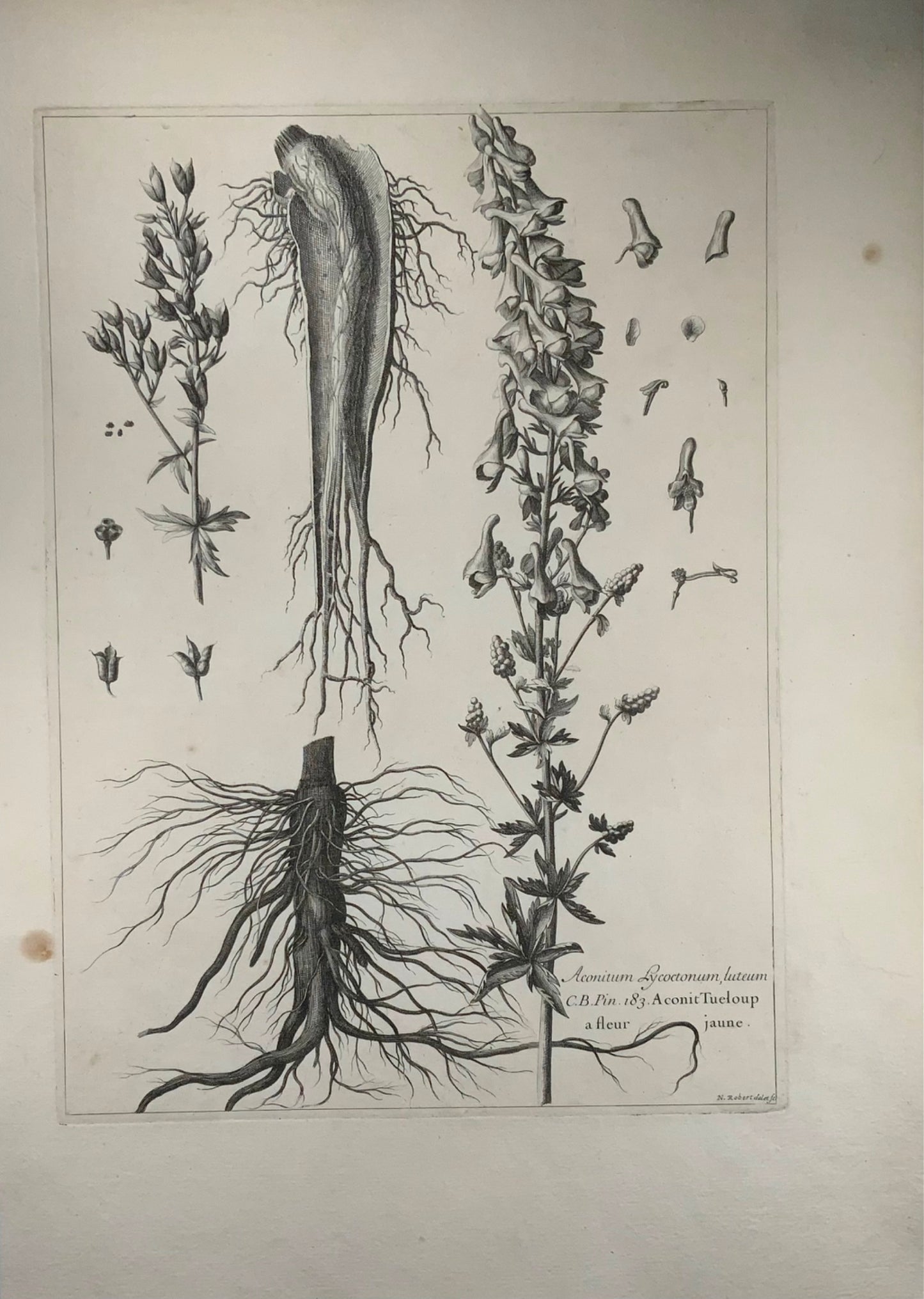
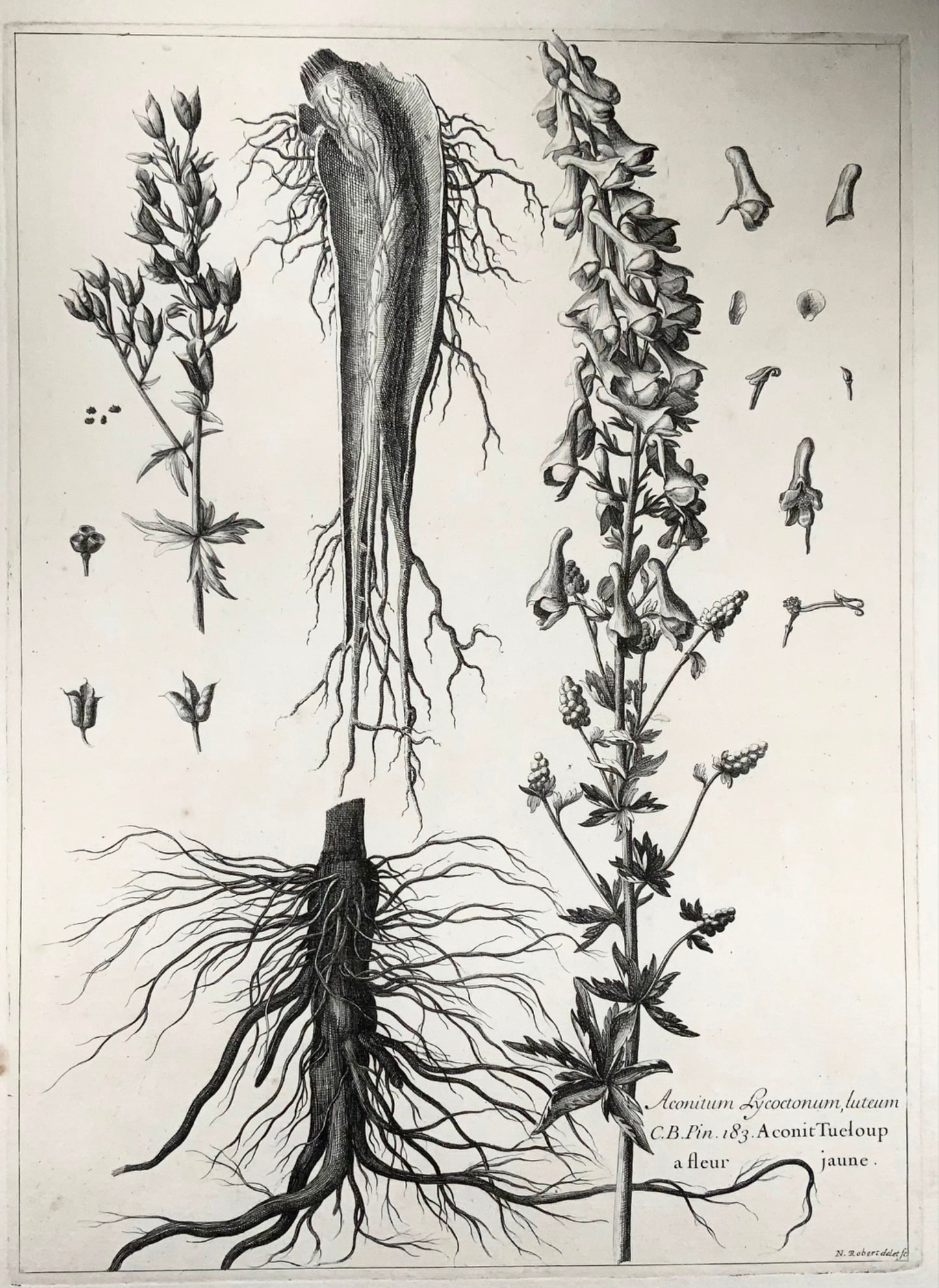

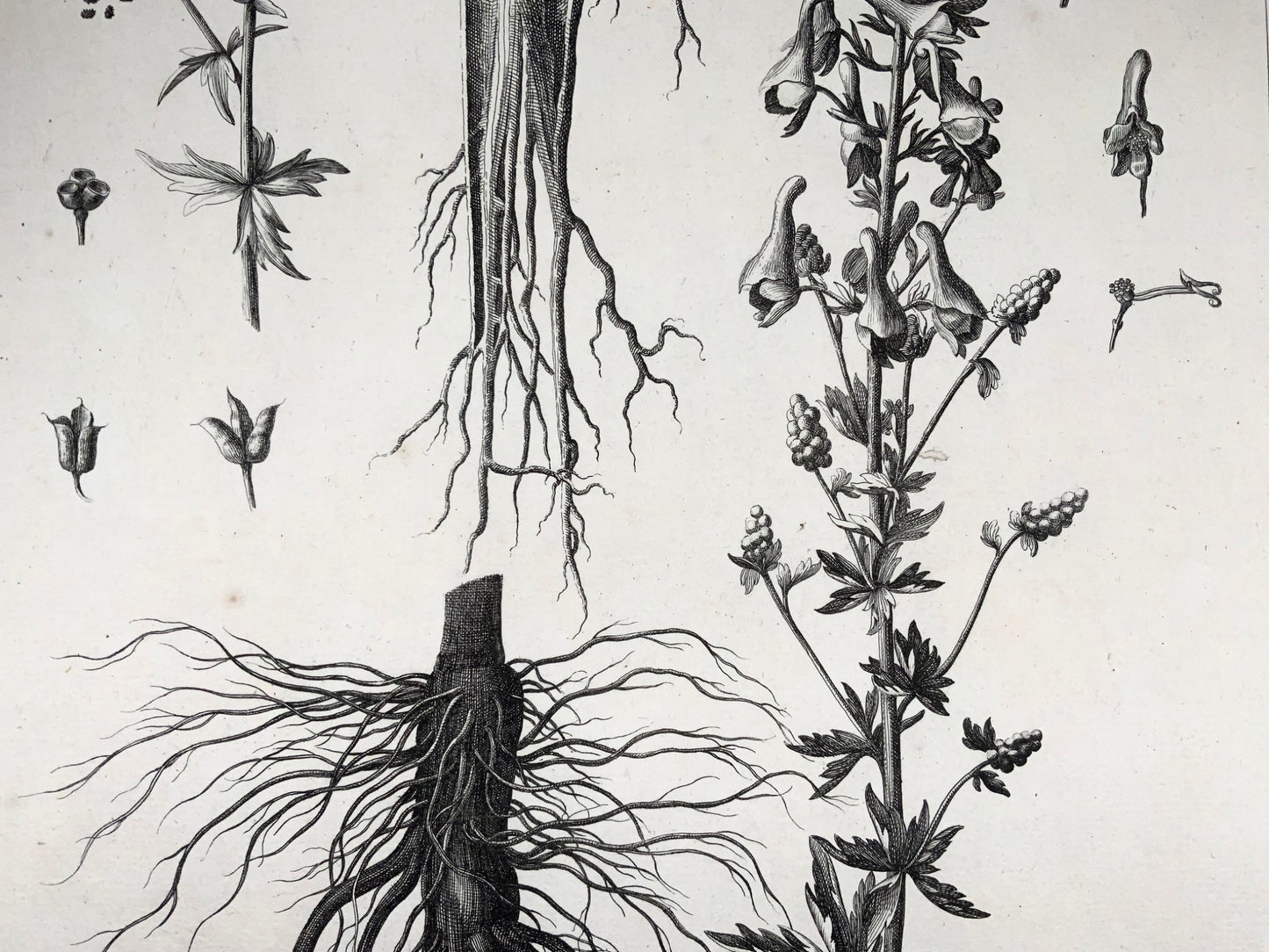
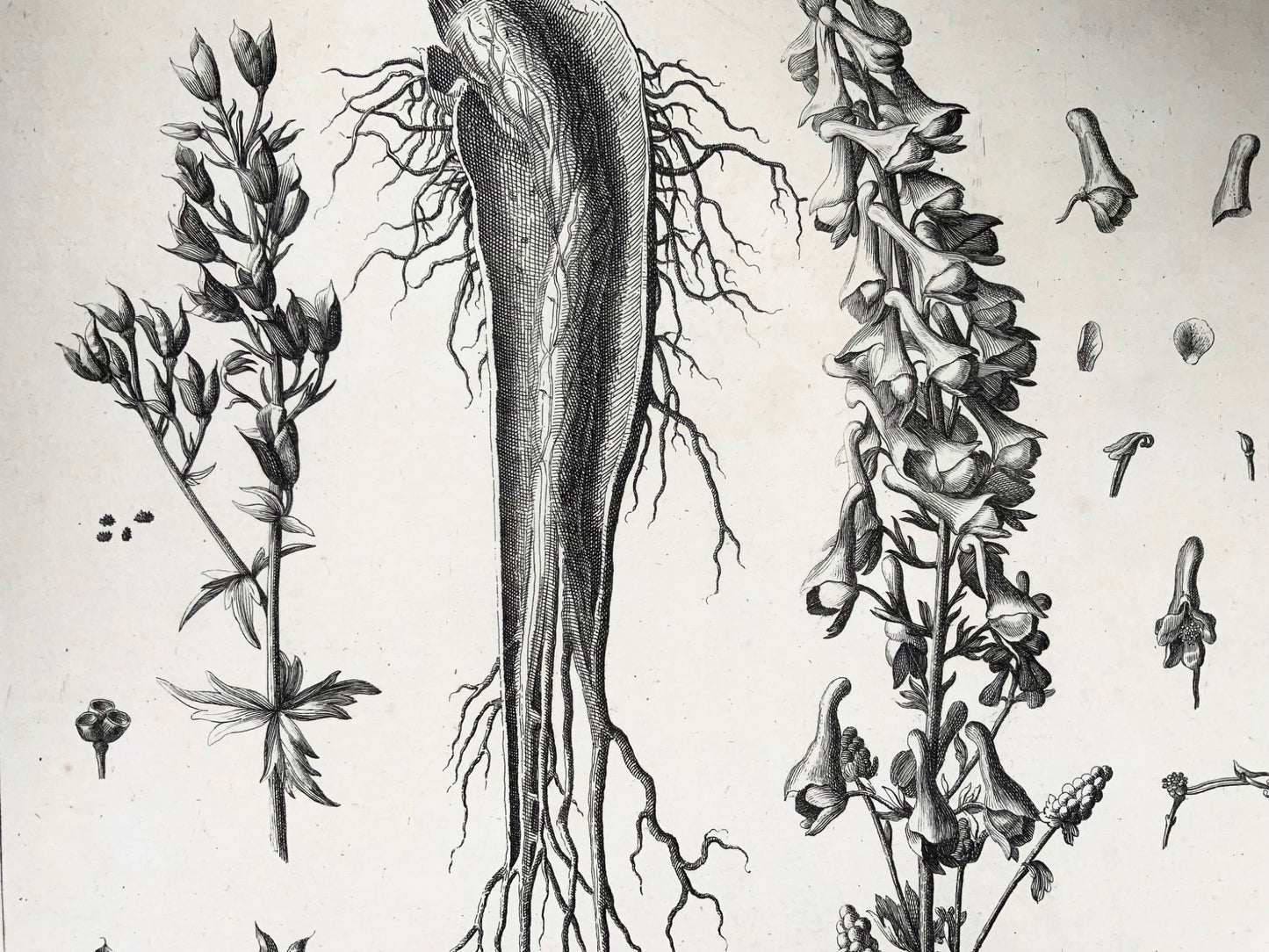

Subscribe to our emails
Subscribe to our mailing list for insider news, product launches, and more.






